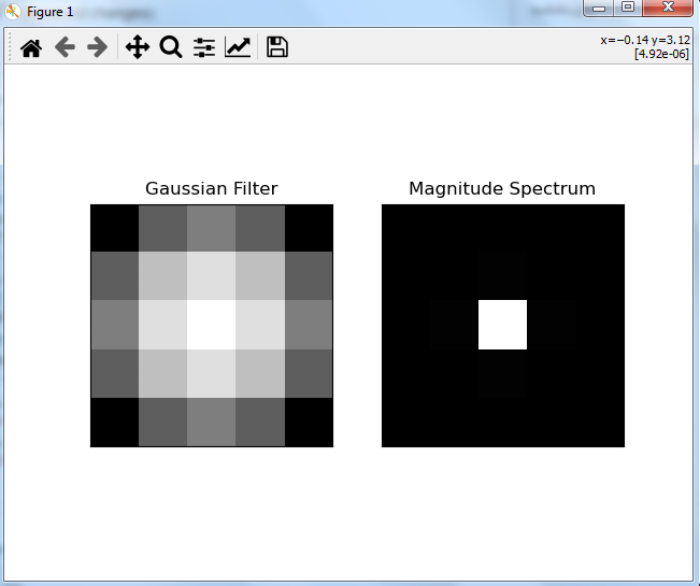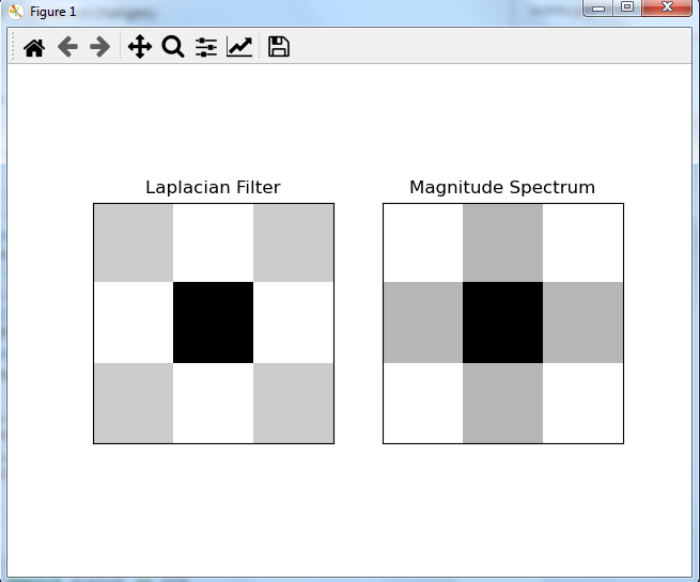
 Data Structure
Data Structure Networking
Networking RDBMS
RDBMS Operating System
Operating System Java
Java MS Excel
MS Excel iOS
iOS HTML
HTML CSS
CSS Android
Android Python
Python C Programming
C Programming C++
C++ C#
C# MongoDB
MongoDB MySQL
MySQL Javascript
Javascript PHP
PHP
- Selected Reading
- UPSC IAS Exams Notes
- Developer's Best Practices
- Questions and Answers
- Effective Resume Writing
- HR Interview Questions
- Computer Glossary
- Who is Who
How to find the Fourier Transforms of Gaussian and Laplacian filters in OpenCV Python?
We apply Fourier Transform to analyze the frequency characteristics of various filters. We can apply Fourier transform on the Gaussian and Laplacian filters using np.fft.fft2(). We use np.fft.fftshift() to shift the zero-frequency component to the center of the spectrum.
Steps
To find Fourier transforms of the Gaussian or Laplacian filters, one could follow the steps given below ?
Import the required libraries. In all below Python examples the required Python libraries are OpenCV, Numpy and Matplotlib. Make sure you have already installed them.
Define a Gaussian or a Laplacian Filter.
Apply Fourier transform on the above defined filters using np.fft.fft2(filter).
Call np.fft.fftshift() to shift the zero-frequency component to the center of the spectrum.
Apply log transform and visualize filters and magnitude spectrum.
Let's look at some examples for a clear understanding about the question.
Example
In this Python program we find the Fourier transform of a Gaussian filter. We also visualize Gaussian filters and Fourier transformed Gaussian filters.
# import required libraries import cv2 import numpy as np from matplotlib import pyplot as plt # create a Gaussian filter x = cv2.getGaussianKernel(5,10) gaussian = x*x.T # apply Fourier transform on the Gaussian Filter fft_filter = np.fft.fft2(gaussian) # Shift zero-frequency component to the center of the spectrum fft_shift = np.fft.fftshift(fft_filter) # apply log transformation mag_spectrum = np.log(np.abs(fft_shift)+1) # visualize the Gaussian filter and transformed Gaussian Filter plt.subplot(1,2,1),plt.imshow(gaussian,cmap = 'gray') plt.title('Gaussian Filter'), plt.xticks([]), plt.yticks([]) plt.subplot(1,2,2),plt.imshow(mag_spectrum,cmap = 'gray') plt.title('Magnitude Spectrum'), plt.xticks([]), plt.yticks([]) plt.show()
Output
The above Python program will produce the following output window ?

Example
In this program, we find the Fourier transform of a Laplacian filter. We also visualize Laplacian filters and Fourier transformed Laplacian filters.
# import required libraries import cv2 import numpy as np from matplotlib import pyplot as plt # create a laplacian Filter laplacian=np.array([[0, 1, 0],[1,-4, 1],[0, 1, 0]]) # apply Fourier transform on the Laplacian Filter fft_filter = np.fft.fft2(laplacian) # shift zero-frequency component to the center of the spectrum fft_shift = np.fft.fftshift(fft_filter) # apply log transformation mag_spectrum = np.log(np.abs(fft_shift)+1) # visualize the Laplacian filter and transform Laplacian Filter plt.subplot(1,2,1),plt.imshow(laplacian,cmap = 'gray') plt.title('Laplacian Filter'), plt.xticks([]), plt.yticks([]) plt.subplot(1,2,2),plt.imshow(mag_spectrum,cmap = 'gray') plt.title('Magnitude Spectrum'), plt.xticks([]), plt.yticks([]) plt.show()
Output
It will produce the following output window ?


